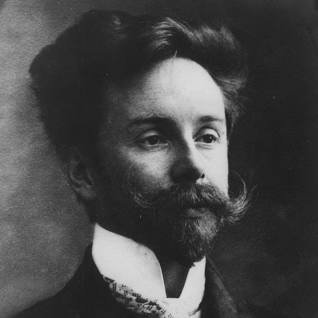Alexander Scriabin and my friend Ben
When I graduated from my fourth and (hopefully) final inpatient rehabilitation stay for chemical dependency, my life was in a bit of a shambles. My relationship had fallen apart and I had to find a place to live because I couldn’t afford the rent on James Avenue alone.
On my very colorful journey to sobriety, I met this smart and talented man named Ben C who had a room for rent. It was a godsend, he had a concert Steinway grand piano and enjoyed having multi-course gourmet dinners that would usually start at around 10pm and go all night.
I met many beautiful, interesting people through Ben and also learned a lot about music. Ben was truly a concert-level classical pianist who had fallen from grace while being chased by his own demons of addiction and various mental health ailments, but he could still play like a Rubenstein, or maybe more like a Horowitz. Ben had a picture of “MaryLou”, his teacher, hanging in the living room. She looked like a Bette Davis character! Well, I’ll just say it, she looked like (the grown up) Baby Jane.
Anyway, you could request any of the big epic pieces from the classical piano repertoire and he could play it! Rachmaninoff, any of the Beethoven Sonatas, Ravel, and my favorite was his interpretation of Chopin’s 4th Ballade. He was also very helpful to me with a sort of layperson cognitive therapy that he would use to talk me through difficult or weird situations that I found myself in after having checked out from normal human life for a long stretch.
Ben introduced me to the music of his favorite classical (late romantic, early modern) composer Alexander Scriabin.
Scriabin was born in Moscow in 1871 on Christmas day into a Russian Noble family, and wikipedia has a great little biography on him here:
But I just want to tell you why Ben loved him so much and what he told me about him, because Ben was fun and funny.
The first thing Ben told me about Scriabin was that he created the “Mystic Chord”. Ben sat down at the piano and played the chord for me and asked me, “See how it is very ambiguous about where it wants to resolve?”
Here’s the chord: C, Gb, Bb, E, A, D
In Jazz theory, this chord could be written as a C7b5(9/13) chord which would be read as a dominant 7 chord which is the 5 chord in the key of F and that should resolve to F, but it doesn’t sound quite right. One reason for this is that by extending up in 4ths (quartal harmony) you move away from strong resolutions. I’m just kind of speculating on this, but when you add 9’s and 13’s everything is more impressionistic and ambiguous. It’s beautiful though!
Here is a great fun explanation of the mystic chord:
Scriabin called this chord the “Pleroma” and he said it revealed what was just beyond the human mind to conceptualize.
Scriabin tied much of his later music to a metaphysics taken from theosophy and other fun crackpot spiritual theories and synesthesia (in his case certain notes triggering a perception of certain colors). His early music was more rooted in Chopin.
Ben always loved the color connection to music and wanted a Clavier a Lumiers so he could play Scriabin and have colors light up like this:
Scriabin with colors :) (please watch this video!)
Ben worked hard on the 10 piano sonatas and made a cool video playing the “Black Mass” Sonata with Kevin Johnson, an artist and dear friend of ours that was living in Minneapolis at the time. We really need to get Kevin to contribute some art to Dada Duende soon! And I’ll try to find out if Kevin still has that video and whether we can find a way to share it.
There is a fun biography on Scriabin that I took with me when I moved out of Ben’s house by Faubian Bowers. At the end of his life, Scriabin was working on a grandiose multimedia orchestral piece called the “Mysterium” that was to be performed in the Himalayas and trigger Armageddon.
My favorite piece by Scriabin is “Album Leaf” much less grandiose but it really sounds like Monk or some other innovative jazz harmonist working in the 1950s or later. Ben taught me to love Scriabin and I still do, mainly because his later modern compositions weren’t locked into atonality or serialism in such a way that they weren’t beautiful-. He liked his synthetic chords and scales but he played around with them instead of adhering to them.
Here’s my favorite:
Please Enjoy! Thanks, C.


